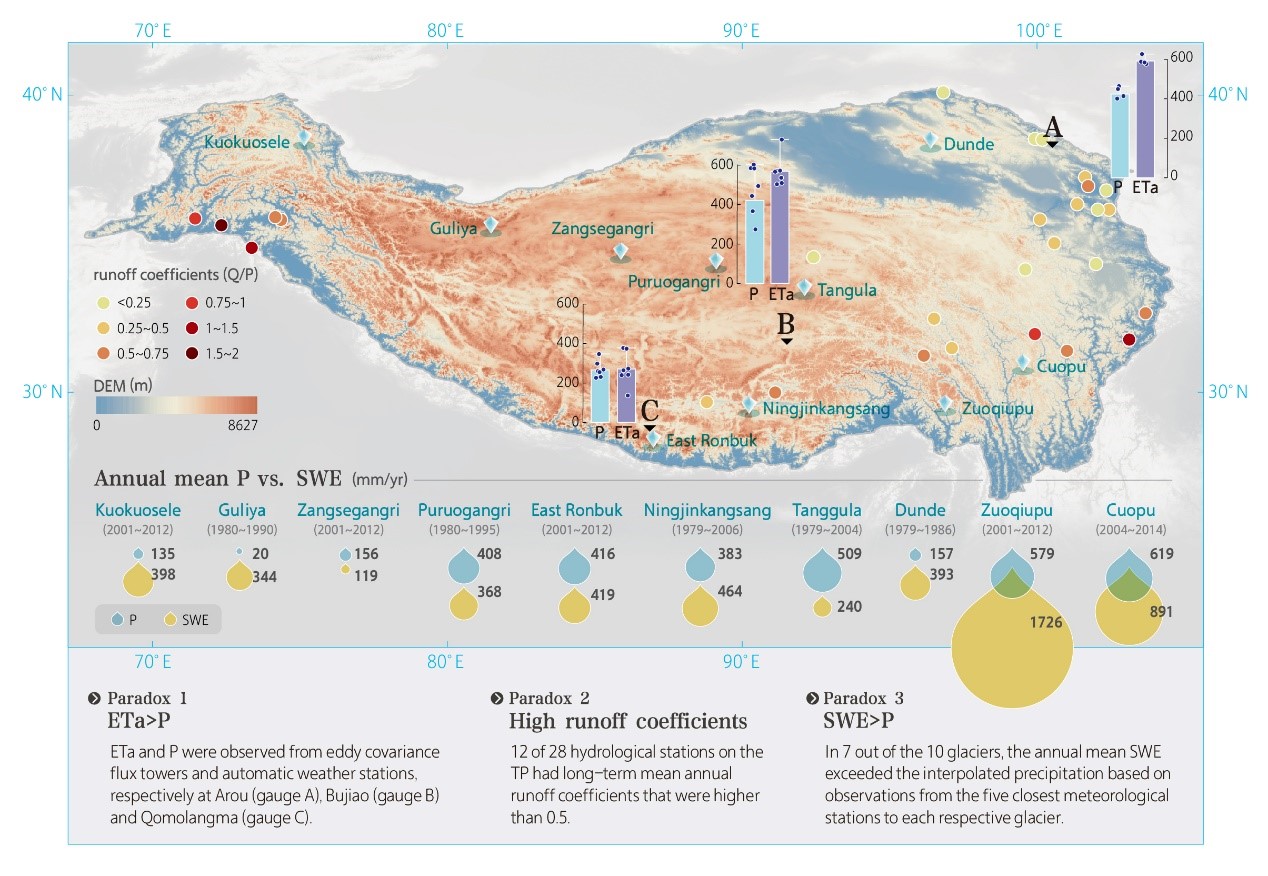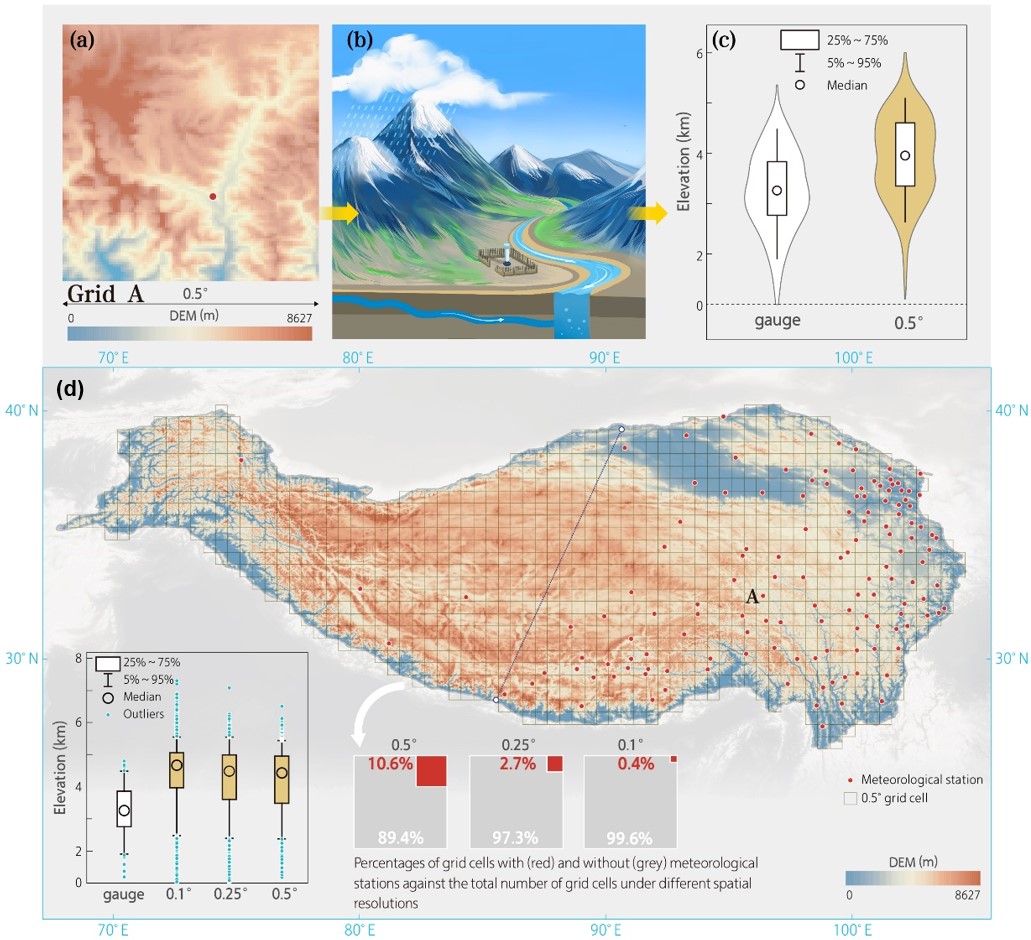The Tibetan Plateau (TP), known as the Asian water tower (AWT), is the origin of 10 major Asian river systems, and supports the lives of ~2 billion people. Amid accelerated warming, obtaining reliable precipitation information across the AWT is crucial for water cycle analysis, future climate projections, and water-related disaster risk assessments.
Despite ground-based instrument monitoring being the primary and most reliable technique for acquiring precipitation data, this study reveals a significant underestimation of actual precipitation across the AWT by the instrumental measurement (Figure 1). This discrepancy is evident in three paradoxes: (1) actual evapotranspiration surpasses measured precipitation (Eta > P), (2) river runoff coefficient are generally high, and (3) snow water equivalent extracted from multiple ice cores markedly exceed measured precipitation over the same period (SWE > P).

Figure 1. Paradoxical findings for water balance across the AWT.
This study delves into the primary reasons behind these paradoxes, focusing on instrumental error and representativeness error. instrumental error arises because a substantial proportion of AWT precipitation falls as snow, often accompanied by strong winds. Traditional ground-level precipitation gauges are ill-equipped to capture rainfall and snowfall due to the design limitations, resulting in underestimations. Representativeness error arise stem from interpolating gauge-based precipitation data into spatially continuous gridded dataset for regional studies. Meteorological stations, predominantly located in valleys or low-elevation areas for accessibility (Figure 2a), miss higher-elevation precipitating, exacerbating representativeness error (Figure 2bc). Additionally, the scarcity and disproportionate distribution of gauges amplify this issue (Figure 2d). To address these challenge, this study proposes a new precipitation monitoring scheme across AWT, emphasizing instrument innovation, optimized site construction and spacing, multi-monitoring method integration, data assimilation, and deep learning techniques.

Figure 2. Representative errors of precipitation estimation at the grid and regional scales across the AWT.
This research, titled "Understanding the Asian water tower requires a redesigned precipitation observation strategy," is published in the Proceedings of the National Academy of Sciences (PNAS), with Chiyuan Miao from Beijing Normal University as the first author and Xin Li from the Institute of Tibetan Plateau Research, Chinese Academy of Sciences, as the corresponding author.
For the full paper, please refer to the following link:https://doi.org/10.1073/pnas.2403557121.


